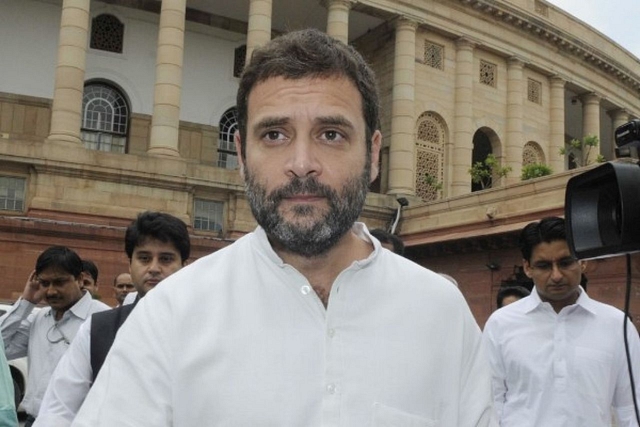
No Rahul Gandhi, Congress Did Not Create India’s Growth Story
Based on track record, incompetence is a charge more easily attached to the leadership of the previous UPA government.
A friend sent me this tweet of Congress president Rahul Gandhi and asked me for comments:
Here is my response:
Travesty. Congress, under P V Narasimha Rao built India’s growth story on a set of policy proposals that were prepared before Rao took office.
Congress, in the 1950s, did not do a bad job. India’s growth was comparable.
Congress, in the sixties and in the seventies messed up India big time, barring a year or two in between.
The war with China in itself was a colossal policy failure.
On the positive side, Indira Gandhi’s ‘Green Revolution’ was a good example. Her overture to Ronald Reagan on inviting American technology companies to set up shop in India opened the way for the IT revolution. But, her negatives far outweighed the one or two good initiatives – undermining of institutions, institutionalising corruption, reversal of Federalism, etc.
Congress in the eighties – Indira Gandhi, on her return, did a decent job from 1980 to 1982 – initiated economic liberalisation. R Venkataraman played an important role in that period, as the finance minister. Tried to weaken the iron grip of the state on the country.
She lost her way from 1983 to 1984. Rajiv Gandhi meant well and did a few good things from 1985 to 1987. Telecom revolution should be credited to him. Initiated de-licensing by allowing broadbanding of licences; But, lasted only two years. Lost his way from 1987 until 1989.
So, out of the 67 years up to 2014, the Congress ruled for 54 years (not counting the United Front coalition years). Out of those, it provided decent governance (only) in some areas for about 15 to 16 years. These 54 years include the five-year term of Rao.
From 2004 to 2008, the Congress party did not contribute to India’s economic growth. It rode the global growth wave and India’s growth was aided by an unsustainable investment boom facilitated by equally unsustainable capital inflows. These investments were largely unproductive too.
From 2009 to 2014, the costs of the unsustainable growth of the previous five years became manifest. They are still being felt and incurred by the country.
Double-digit inflation and the collapse of the Indian rupee are but two of the testimonies. Tax terrorism started from the budget of 2012-13 (and, unfortunately, has continued under this government, with greater vigour).
From 2014 to 2018, India suffered monsoon failures and global growth slowdown. India had to use the bonanza from the crude oil price crash to repair the country’s finances, left in utter disrepair by the previous government.
Demonetisation was not thought through thoroughly and implemented badly. Yet, it is possible that its long-run benefits outweigh the costs. Goods and services tax will surely be a long-run success story as is the insolvency and bankruptcy framework.
Short-term glitches are inevitable in a big country such as this and some of the glitches are due to external technology support from private sector.
Formalisation of the Indian economy is sorely needed. This government has made crucial beginnings – in many important ways – in this largely unpopular task.
The development of the northeastern region of the country and its integration with the rest of the nation will have huge long-run dividends. For example, the recently completed bridge in Assam was 21 years in the making. In the first 17 years, there was scarcely any progress on its construction!
In sum, based on track record, incompetence is a charge more easily attached to the leadership of the previous United Progressive Alliance government. There is empirical evidence.
This article first appeared in The Gold Standard and has been republished here with permission.